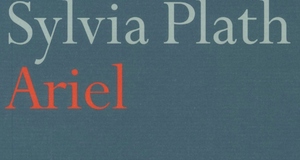Redefining the Elegy in the Twentieth Century: Thomas Hardy's The Convergence of the Twain And Sylvia Plath's Daddy
By
2012, Vol. 4 No. 08 | pg. 1/2 | »
KEYWORDS:
Forms of poetry are constantly changing as authors stray from what is conventional and familiar, and delve into what is new and different. Elegies that one finds in twentieth century literature are far from what one would have read centuries prior, and this changing convention can be attributed to writers like Thomas Hardy and Sylvia Plath. Born in 1840, Thomas Hardy is often thought of as a novelist. Perhaps it is put best in Louise Dauner's "Thomas Hardy, Yet and Again" when she says of Hardy, "Though he was one of the most controversial writers of his time, this gentle, soft-voiced, self-effacing little man was the acknowledged master of the English novel in his age" (1). Two of his more famous works, Tess of the d'Urbervilles and Jude the Obscure, startled readers with their frank treatment of sexuality. Because of the criticism his novels received, Thomas Hardy shied away from fiction and turned more towards poetry as the nineteenth century came to an end. One of his more popular works is "The Darkling Thrush," in which the speaker hears a thrush singing in the gloom. The poem is often seen as an elegy for the nineteenth century. This is far from Thomas Hardy's only elegy. Jahan Ramazani says in "Hardy's Elegies for an Era: 'By the Century's Deathbed'" that "Hardy wrote hundreds of elegies, most of them for human beings, some of them among the great elegies of his time" (131). Of these elegies, it is those that veer away from the conventional elegy and are about subjects other than humans that are of most interest. "The Convergence of the Twain" is one such poem. Thomas Hardy may be one of the twentieth century's greatest poets, but there are many other poets whose works are just as impressive. Sylvia Plath, born almost one hundred years after Hardy, is remembered for her novel The Bell Jar, as well as for her poetry's recurring themes of suicide, death, and depression (along with her death by her own hand). Her poetry earned her a posthumous Pulitzer Prize—the first awarded posthumously to a poet. Plath often wrote elegies, many revolving around her father Otto Plath. Ramazani says in "'Daddy, I Have Had to Kill You': Plath, Rage, and the Modern Elegy" that "Plath's father grips her through poem after poem" as she "explicitly evokes his death in her novel, journals, and stories and in various poems" (1142). Plath altered the definition of the elegy. Ramazani declares, "She should be understood as participating in a genre irreducible to raw outpouring, impersonal artifice, or prompt tally—a genre that allows her, like other poets, both to mask and to reveal grief, to dramatize and to disclose it. " ("'Daddy…" 1142-43)Plath's poem "Daddy" is an excellent example of her version of an elegy. Plath's elegy differs from Hardy's "The Convergence of the Twain" in that it is about her father—a person—and not about an inanimate object; therefore Plath's work is closer to the previous expectations for elegies. Yet, that is not the only difference between Hardy and Plath, and Plath's poems certainly do deviate from elegies written before the twentieth century. Plath's elegies are angry. Her anger is what makes her unique. This "is precisely her most important contribution to the genre" of the elegy ("'Daddy…" 1143). An elegy is defined as "a mournful, melancholy, or plaintive poem, especially a funeral song or a lament for the dead" (Random House, Inc.). In the eighteenth century an elegy was known as a poem on the death of a particular person. One example is "Lycidas," a poem by John Milton. Milton wrote the poem in 1637 after one of his friends drowned. Another example is "Adonais: An Elegy on the Death of John Keats, Author of Endymion, Hyperion, Etc.," which was written by Percy Bysshe Shelley after he heard of John Keats' death in 1821. Both of these, in the style of classical elegies, express lamentation for death. They offer praise for the ones who have died. These poems offer consolation to their audience in order for the audience to move forward. Finally, they make their subjects immortal through their writings. While the formula for the elegy prior to this time seems to have been straightforward, it soon began to evolve as a genre as poets began to write about loss in many different ways. Elegies began to be written about loss in general. Poems about the decline of an era (like Hardy's "The Darkling Thrush") or the death of a culture were now being considered as elegies. They were unconventional. Unlike the elegies of prior centuries, sometimes elegies of the twentieth century did not give the audience an opportunity for consolation, or a way to recover from their loss. For the most part these poems were simply about some sort of loss, which can be seen in Hardy's "The Convergence of the Twain" and Plath's "Daddy." The two poems, while at times following the criteria of the elegy from the previous centuries, broaden the definition of the elegy for the twentieth century. Hardy's "The Convergence of the Twain," is an occasional poem since it is written about a certain event in particular—the sinking of the Titanic, but it can also be categorized as an elegy because it is a poem of loss and mourning. The biggest difference between "The Convergence of the Twain" and earlier elegies is that its subject is neither a person nor a group of people as was the norm for elegies. Hardy deviates from earlier writers and the expected elegy formula by writing about an inanimate object: the Titanic. Thomas Hardy's "The Convergence of the Twain" is on the loss of the Titanic itself. Instead of writing about the deaths of the many passengers, as would be expected, Hardy writes on the material object. The Titanic was a luxurious ocean liner that sank on April 14, 1912. The ship had been proclaimed unsinkable due to a number of safety features—including a series of closeable watertight compartments. It was quite unexpected when it was learned that the ship encountered an iceberg in the North Atlantic at 11:40pm during its maiden voyage. Over 1500 people lost their lives in the tragedy. The loss of the ship and many of its passengers would go on to spur countless books, films, and poems. Museums often dedicate space to items that have been recovered from the ship or its passengers as a way of preserving history. Thomas Hardy's "The Convergence of the Twain" was written within two weeks of the accident and published in 1914 (Dauner 11). Yet, even one hundred years later, people are still interested in what happened to the Titanic. It is likely that they will continue to be interested, as is evident when one takes into account the number of commemorations or programs around today which still revolve around the tragedy. Hardy's "The Convergence of the Twain" begins with an epigraph reading, "Lines on the loss of the 'Titanic.'" While the generalization "loss of the Titanic" could mean the loss of those who were on the great ship, the first stanza immediately gives clues to the Titanic itself as being "the loss." It reads, "In a solitude of the sea/ Deep from human vanity,/ And the Pride of Life that planned her, stilly couches she" (1-3). It can be assumed that the "she" is the Titanic, as opposed to a female passenger—especially since it is mentioned that the "Pride of Life" "planned her." The "Pride of Life" seems to indicate that the prideful were the ones who created the Titanic, and are the same as those of "human vanity." Stanza two continues to point to "she" being the Titanic as it is mentioned that "late the pyres/ Of her salamandrine fires" (4-5). The fires that were once burning on the lower levels of the ship are "late," or no more. Hardy's decision to personify the ship is hardly unique, since ships along with countries and oceans are often referred to as female; however, his choice to speak of the ship as if "she" were a woman, allows the reader to feel as if Hardy's poem is about a person and therefore fit better into what was considered the elegy genre. Thomas Hardy continues to personify the Titanic as "The Convergence of the Twain" progresses. In stanza seven it is revealed that "…a sinister mate/ For her—so gaily great—" has been created (19-20). Here Hardy takes the personification further by indicating that the iceberg is a mate, or lover. Later it is said that the two will have an "intimate welding," a phrase which is largely suggestive of intercourse (27). The word "welding" is also very close to the word "wedding," which would be another way of joining these two creatures. The collision of the Titanic and the iceberg is relayed by saying "consummation comes," again, echoing the idea of a sexual act (33). It is hardly unexpected, as Hardy's earlier novels were filled with references to sexual acts. Though Hardy personifies the Titanic and the iceberg, bringing "The Convergence of the Twain" closer to the definition of what was expected of earlier elegies, he continues to deviate from the other expected criteria. "Rather than lament the catastrophe, Hardy comically transforms it into a sexual union" ("Hardy's Elegies…" 131). Hardy does not seem to express lamentation for the loss of the Titanic (or its passengers). There are sad images in the poem, such as stanza four's "Jewels in joy designed/ To ravish the sensuous mind/ Lie lightless, all their sparkles bleared and black and blind" (10-12). Yet, anything that can be interpreted as grief is overshadowed by the continued descriptions of the ship and those who created it. As mentioned earlier, the "Pride of Life" and "human vanity" created the Titanic (2-3). Those who journeyed on the ship are described as "opulent" (8). The ship is described as "vaingloriousness" by the fish at the bottom of the sea (15). For that matter, the fish are described as "Dim moon-eyed fishes," which Hardy may mean to harshly refer to the passengers (13). "The sea-worms" are also described as "grotesque, slimed, dumb, [and] indifferent," which again, are all adjectives that could be used to describe the wealthy passengers (9). In any case, it is difficult to take any of Hardy's lines as praise for those who have died. Hardy does, however, offer something that can be taken as consolation for the loss of the Titanic—the idea that a higher power is behind the tragedy. The creator of the iceberg is described as "The Immanent Will that stirs and urges everything" (18). In addition, Hardy explains that "No mortal eye could see" what was going to happen, as well as the fact that the ship and iceberg did not collide "Till the Spinner of the Years/ Said 'Now!'" (26, 30-31). While not an assurance that the Titanic (or its passengers) are in a better place, Hardy still uses his elegy to console the reader by insinuating that this is all part of God's plan.Continued on Next Page » Suggested Reading from Inquiries Journal
Inquiries Journal provides undergraduate and graduate students around the world a platform for the wide dissemination of academic work over a range of core disciplines. Representing the work of students from hundreds of institutions around the globe, Inquiries Journal's large database of academic articles is completely free. Learn more | Blog | Submit Latest in Literature |
















